9 Smart Solutions for Reducing Echo in Your Living Room and Beyond
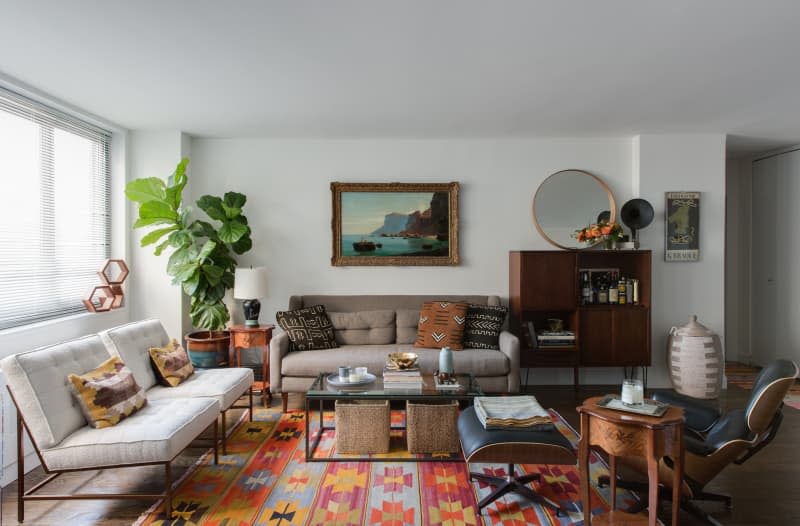
If you’ve ever been inside a large public space or an airy loft with bare walls and hard surface floors, you may have noticed a distinctive ringing sound called flutter echo. This phenomenon occurs when sound waves bounce back and forth between the walls, ceiling, and floor, making conversations difficult.
Of course, your loft apartment may not be quite as large as an airport, train station, or library, but let’s face it: You’re likely dealing with plenty of other noise pollution. That’s why you might be wondering how to reduce echo in a room.
Two opposing walls can allow sound waves to reflect back and forth in a repetitive manner, resulting in a blurred, out-of-focus, and delayed interior sound. Tall ceilings and long rooms can further increase these distinct echoes, affecting conversations or making it difficult to enjoy music or television at home.
But with a little thought and careful use of the following solutions, you can curb distracting sounds and create a more peaceful space without the echoing. Here are a few ways you can incorporate different textiles and other items to help reduce echo in a room.
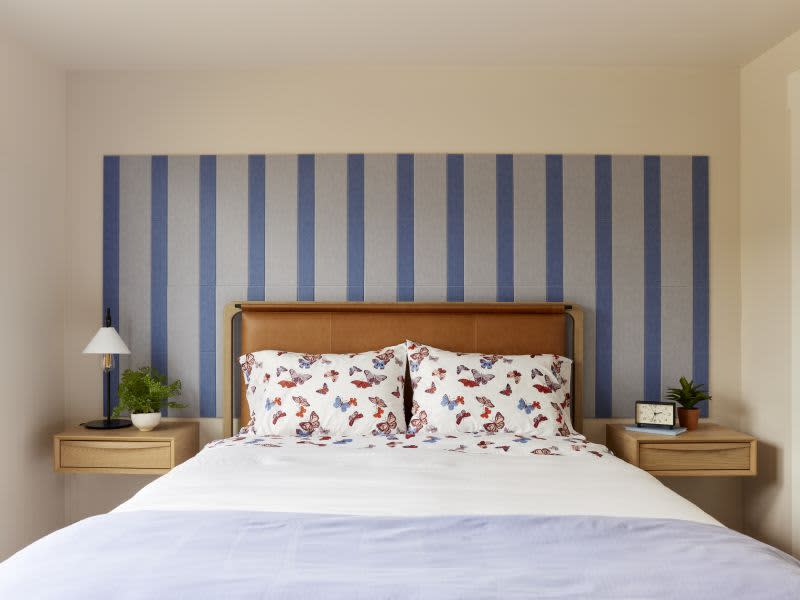
Give Felt Tiles a Try
Ceramic tile is lovely, but adding it to your walls in certain kinds of spaces — living rooms, offices, and bedrooms, for starters — introduces another hard surface that’s not going to help with noise pollution. If you’re craving the punch and pattern that colorful tile can bring into a space but also need to reduce sound, allow me to introduce you to Felt Right, a brand that specializes in sound-dampening felt wall tile. From mural-like installations made out of different smaller geometric shapes to oversized engraved squares capable of covering entire walls, Felt Right has design solutions for so many different applications, and all of the pieces have a noise reduction coefficient (NRC) of .35, meaning they absorb about 35% of the sound that hits them. The tiles are made largely from recycled PET, and certain installations can cost less than $200.
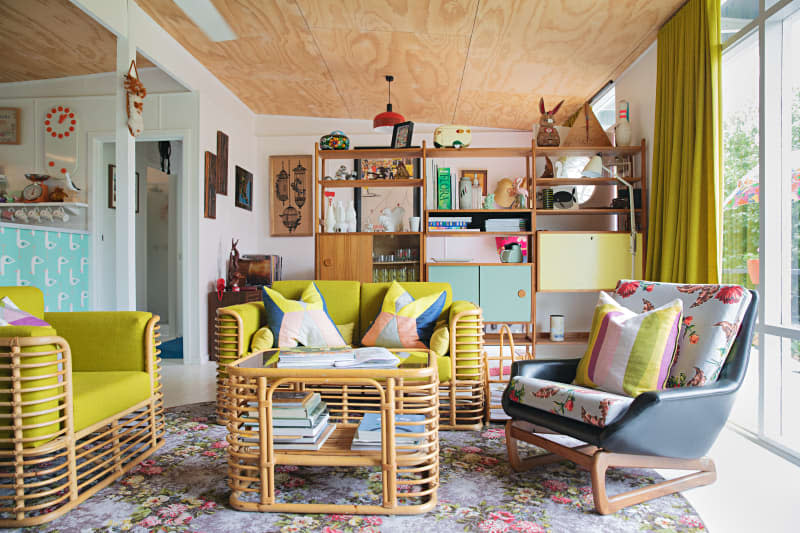
Soundproof Your Ceiling
If you’re in an apartment with noisy upstairs neighbors, soundproofing your ceiling can make the sounds of heavy footsteps, blaring televisions, and moving furniture fade away. You need to understand the basics of construction for a project like this, whether you decide to DIY it yourself or hire it out. Figure out what kind of ceiling you have (typically standard drywall or drop), how you want to reduce sound (absorption, dampening, decoupling, or mass), and determine what your budget allows. Adding an extra layer or two of drywall might be all you need to rest and sleep easier.
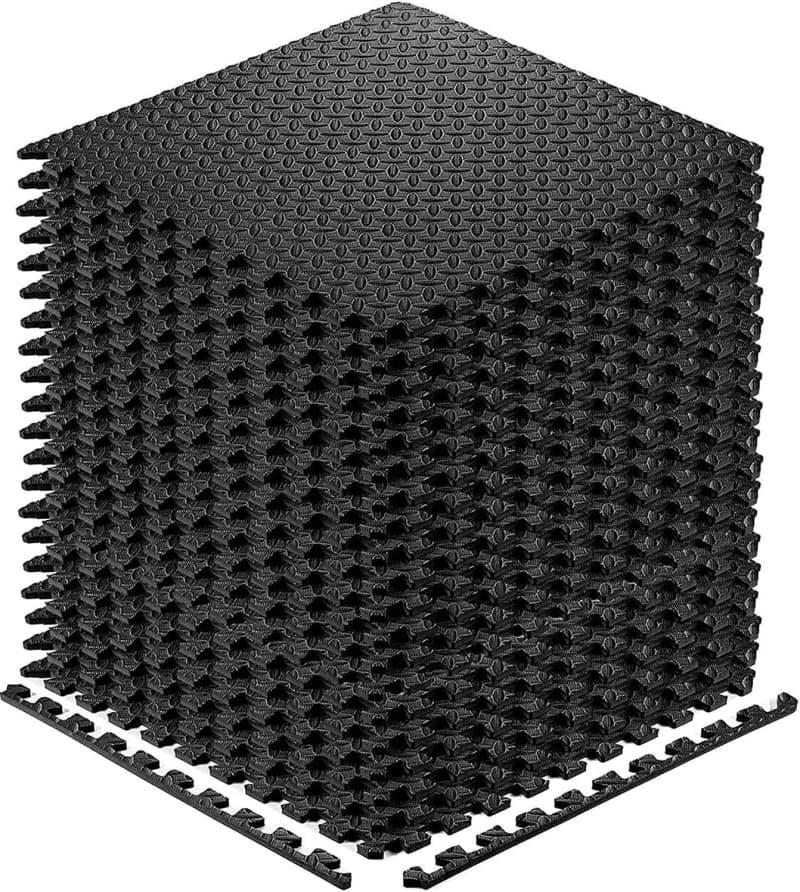
Install Foam Mats
Another method to try if you’re wondering how to reduce echo in a room is foam squares. Simply puzzle them together to form a foam mat on your floor. You can add an area rug over the foam for even more echo reduction.
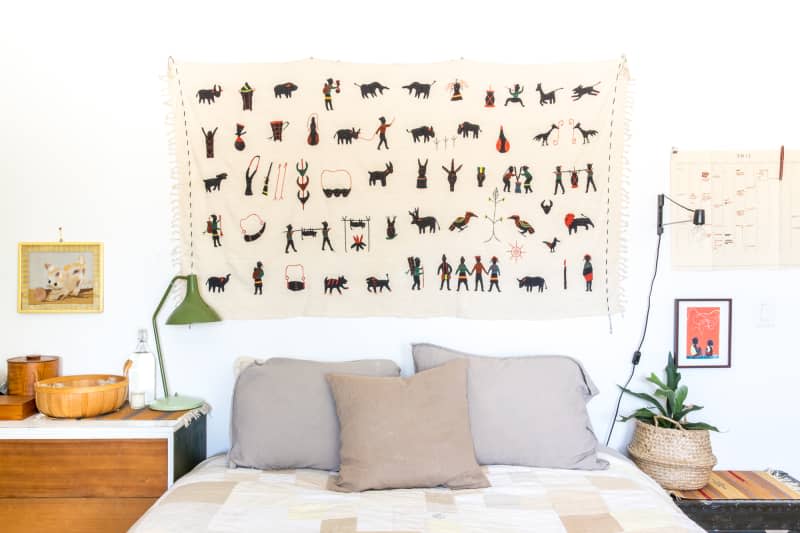
Hang Tapestries on Parallel Walls
A large canvas painting or cloth textile will add a little sound absorption to combat echo. Positioning soft surface items on parallel surfaces will especially help disrupt the ability of sound to bounce back and forth between adjacent walls.
One additional note before choosing wall art: Heavy oil paint can resemble a hard surface when dry and cause reflection and diffusion. So the softer your wall art’s surfaces, the better.
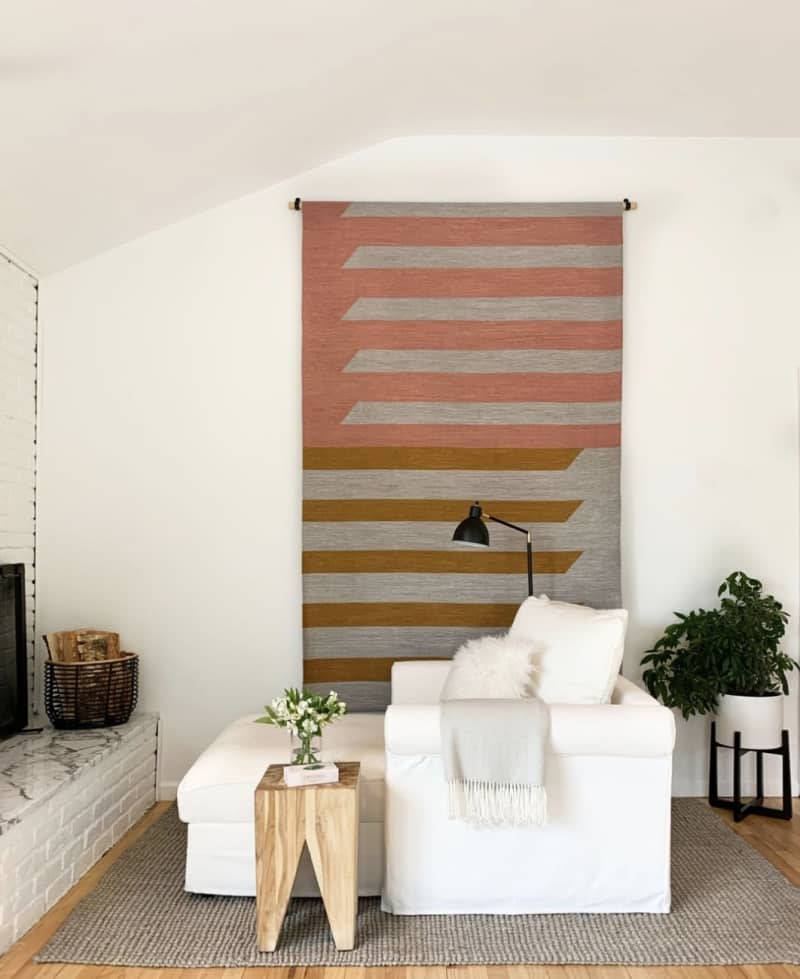
“Carpet” Your Walls
You don’t literally have to lay carpeting on your walls like it’s the ’70s, but you could consider displaying a colorful area rug or a heavy blanket on your walls to dampen sound. Rugs and blankets are often thicker than tapestries and woven wall hangings, so you might be able to get even more echo-reducing bang for you buck with one of these similar decorative solutions.
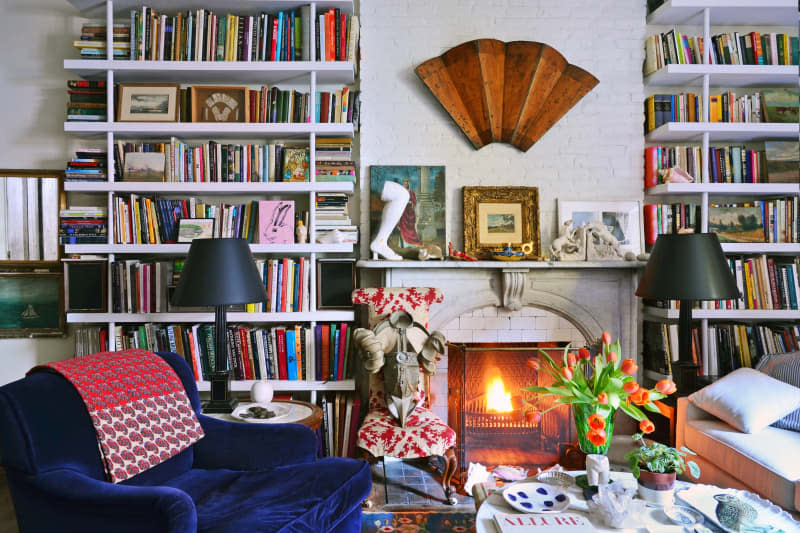
Use a Tall Bookcase and Add Objects to the Room
A large bookcase accessorized with various sized objects can soften and dampen echoes by forcing sound waves to bend around, diffusing and scattering sound throughout the room. Placing books on a bookcase at different depths also enhances this diffusion effect, thus breaking up the flutter of echoes.
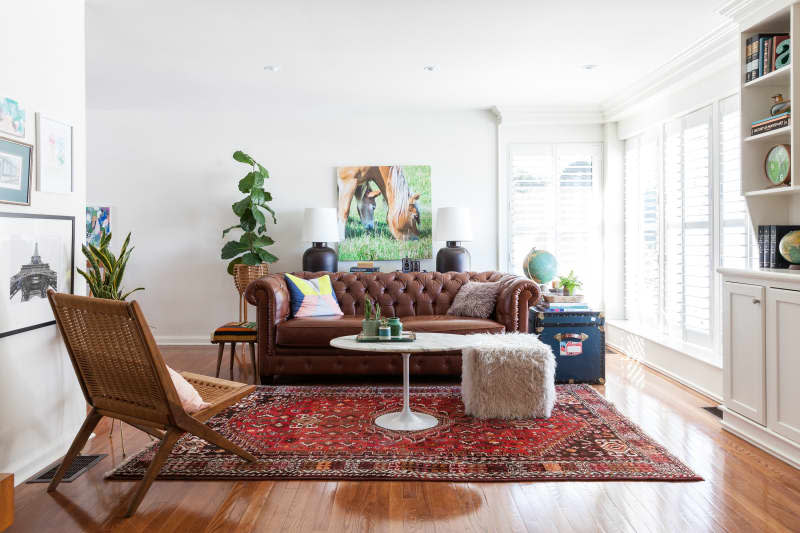
Add Area Rugs to Bare Floors
Floors made of concrete, tile, or hardwood can also act as a reflective surface. Using an area rug not only adds warmth and decorative punch, but the softer surface is especially useful in reducing echoes in rooms with tall ceilings.
Do yourself a favor and add as many area rugs to your home as you can. Rugs will define each of your spaces, provide comfort underfoot, and also help absorb sounds—there is, after all, a reason landlords often ask tenants to cover a majority of their floors in carpeting.
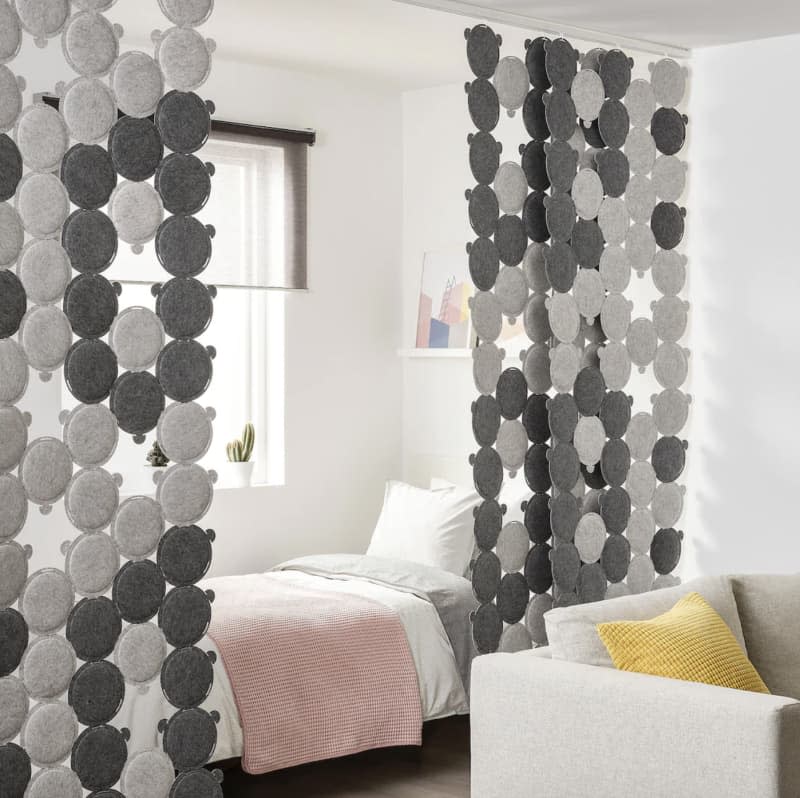
Bring in Acoustic Panels to Enhance Sound Absorption.
Traditional acoustic foam panels can effectively reduce sound from reflecting back and forth. I came across a company that allows customers to choose art to embellish normally utilitarian-looking acoustical panels. AcoustiArt marries custom art, text, or photography onto materials specifically designed to reduce noise transference and room echoes.
For a DIY solution, you can cut and install foam sheets to place inside the back of canvas-mounted artwork; soft foam sheets are often packed while shipping, so you may already have some around. Foam of various sizes can also be ordered online from speciality retailers like Foam By Mail.
And leave it to IKEA to have their own budget sound absorption solution as well. The ODDLAUG sound absorbing panel comes with 15 circular polyester pieces that you can put together in any configuration you like to dampen the general sound level in a room, including background noises. For best results, use as many pieces as you can—they’re even compatible with IKEA’s curtain track system should you want to use them as a room divider.
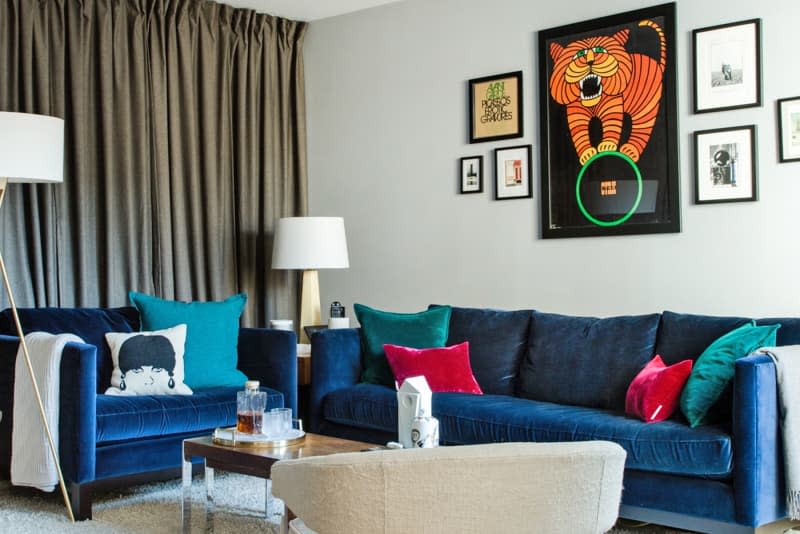
Work Window Coverings to Their Full Potential
When it comes to sound absorption, the heavier—and more ample—your window coverings, the better, especially if you have large windows. For drapery, consider fabrics like velvets and sturdy canvas cottons as opposed to light, gauzy sheers.
If you only have shades or blinds, adding that layer of curtains can really help. Same is true if you only have curtains, so consider pairing yours with bamboo or fabric woven shades, which are more absorptive than metal or plastic blinds.
You can also double up on your curtain panels, as seen in the room above. It’s also possible to add curtain panels to a wall or a large opening that leads into an adjoining room. The more soft fabric to absorb noise, the better.
A flutter of echoes can make any space feel clinical, cold and uninviting. Treating your room with smart acoustic choices like the ones listed above can improve understanding movie dialog, clarity of music from the stereo, and most importantly, keep conversations easy and comfortable.

